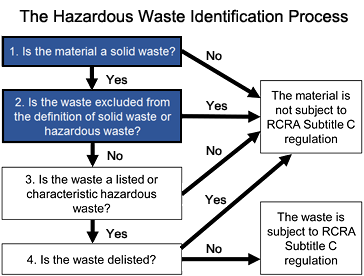Not known Facts About Reclaim Waste
Not known Facts About Reclaim Waste
Blog Article
The Ultimate Guide To Reclaim Waste
Table of ContentsThe 2-Minute Rule for Reclaim Waste7 Simple Techniques For Reclaim WasteEverything about Reclaim WasteAn Unbiased View of Reclaim WasteThe Best Guide To Reclaim Waste
Domestic sewer waste refers to the waste and products from a property septic storage tank. The proper management and disposal of domestic sewage waste need liquid waste to be moved to a sewage therapy plant where the appropriate techniques and tools are applied to detoxify and dispose of waste.
Commercial waste often consists of possible threats, such as flammable materials or a blend of fluid and strong waste products, and calls for an advanced and in-depth disposal process. The disposal of industrial waste usually involves the filtering of waste prior to transport to make certain risk-free and correct disposal. Hazardous waste is developed from by-products and runoff of commercial procedures and production.
This type of waste can not utilize the same sewer administration transportation or procedures as septic or industrial liquids. The hazardous waste administration procedure needs the inspection and screening of liquid waste before it undertakes the disposal procedure (liquid waste disposal). Runoff waste is the fluid waste that comes from runoff and excess stormwater in extremely populated locations or cities
Runoff waste can trigger contamination and flooding if not dealt with effectively. Guaranteeing appropriate waste management can stop calamities and reduce ecological injury.
Indicators on Reclaim Waste You Need To Know
Contact PROS Services today to find out regarding our waste administration and disposal services and the appropriate ways to care for the fluid waste you produce.
(https://gravatar.com/maximum5d830db060)Do you understand what happens to your water when you end, flush the commode or drain the cleaning machine? No? Well, it deserves knowing. This supposed 'wastewater' is not only a vital source but, after therapy, will certainly be launched to our land, waterways or the sea. Used water from commodes, showers, bathrooms, kitchen sinks, washings and industrial processes is referred to as wastewater.

water used to cool down machinery or tidy plant and devices). Stormwater, a form of wastewater, is runoff that flows from agricultural and city locations such as roofs, parks, yards, roads, paths and gutters right into stormwater drains, after rainfall. Stormwater streams without treatment directly to regional creeks or rivers, eventually reaching click site the ocean.
A Biased View of Reclaim Waste
In Queensland, most wastewater is treated at sewer treatment plants. Wastewater is transported from residential or commercial sites via a system of drains and pump stations, known as sewage reticulation, to a sewer treatment plant. Local federal governments build, preserve and operate most sewage treatment plants. Operators are licensed under the Environmental Management Act 1994 to discharge cured wastewater at an acceptable ecological requirement right into rivers.
The Division of Natural Resources advises regional federal governments about handling, operating and preserving sewage systems and therapy plants. In unsewered areas, city governments may require homeowners to install private or family sewage treatment systems to deal with domestic wastewater from bathrooms, kitchen areas, restrooms and laundries. The Department of Natural Resources authorises the use of family systems when they are shown to be reliable.
A lot of stormwater gets no therapy. In some brand-new subdivisions, treatment of some stormwater to remove trash, sand and gravel has started utilizing gross pollutant traps. Wastewater treatment happens in 4 phases: Eliminates solid issue. Bigger solids, such as plastics and various other objects incorrectly discharged to sewage systems, are removed when wastewater is gone through screens.
Wastewater then moves into huge tanks where solids clear up and are removed as sludge. Grease and residue are skimmed from the surface area. Utilizes tiny living organisms called micro-organisms to break down and eliminate remaining liquified wastes and fine fragments. Micro-organisms and wastes are integrated in the sludge. Removes nitrogen and phosphorus nutrients that could trigger algal blossoms in our waterways and endanger water life.
Getting The Reclaim Waste To Work
Nutrient removal is not available at all sewer therapy plants since it needs costly specialist equipment. Clear liquid effluent generated after treatment may still consist of disease-causing micro-organisms - liquid waste removal melbourne.

The majority of wastewater flows right into the sewerage system. Under the Act, regional governments carry out authorizations and permits for ecologically pertinent activities (Ages) involving wastewater launches that may have a local influence.
7 Easy Facts About Reclaim Waste Explained
Otherwise, examples are taken for lab evaluation. Often several tests are needed to establish the levels of each of the various pollutants such as oils, heavy metals and pesticides in water. Tracking gives valid information about water top quality and can verify that permit problems are being fulfilled. The details acquired with surveillance provides the basis for making water quality decisions.
Report this page